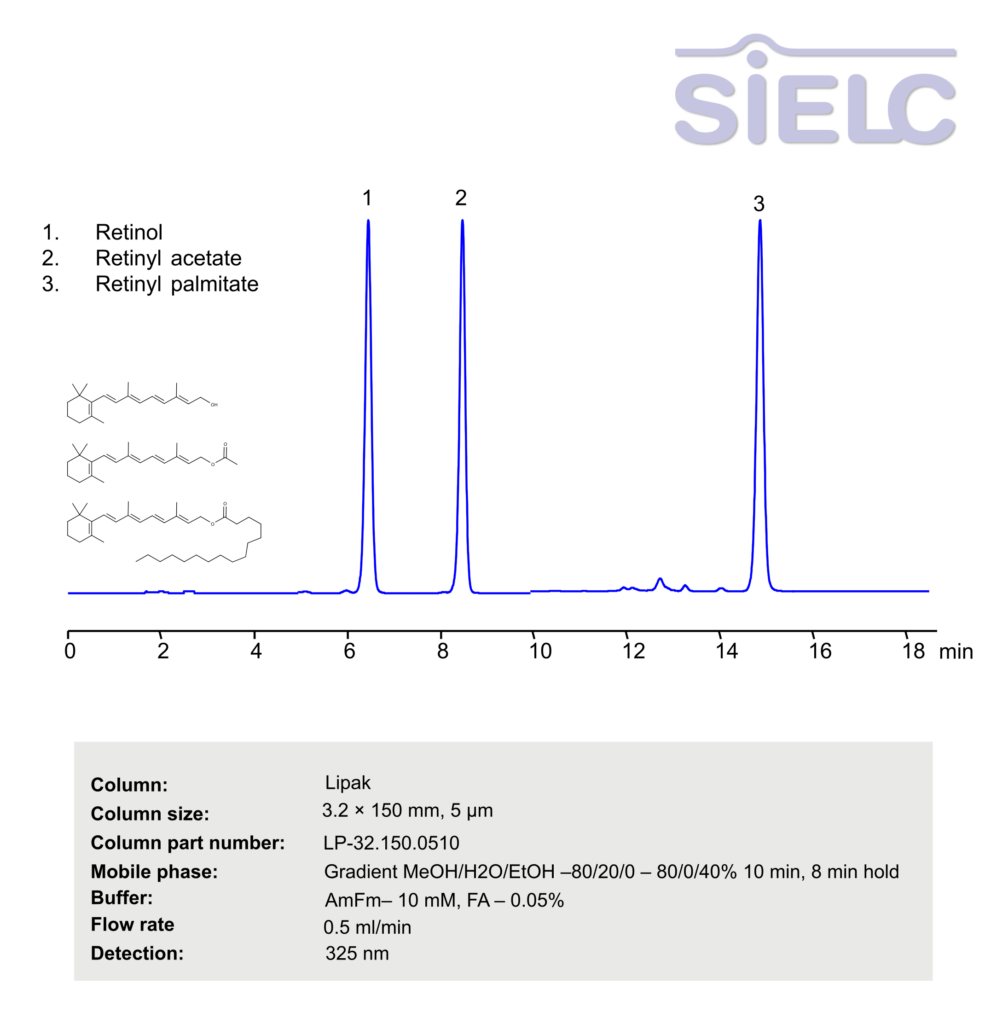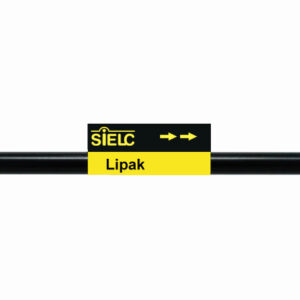HPLC Method for Retinol (Vitamin A), Retinol acetate, Retinol palmitate on Lipak by SIELC Technologies

High Performance Liquid Chromatography (HPLC) Method for Analysis of Retinol (Vitamin A), Retinol acetate, Retinol palmitate
Retinol, also known as vitamin A1, and its synthetic derivatives are widely studied for their impact on skin health, cellular regeneration, and their role in treating various skin conditions like acne, wrinkles, and hyperpigmentation.
Retinol (Vitamin A), Retinol acetate, Retinol palmitate can be retained, and analyzed using a Lipak mixed-mode stationary phase column. The analysis utilizes an gradient method with a mobile phase consisting of water, methanol (MeOH), Ethanol (EtOH), ammonium formate and formic acid as a buffer. Detection is achieved using 325 nm
| Column | Lipak, 3.2 x 150 mm, 5 µm, 100 A, dual ended |
| Mobile Phase | Gradient MeOH/H2O/EtOH –80/20/0 – 80/0/40% 10 min, 8 min hold |
| Buffer | AmFm– 10 mM, FA – 0.05% |
| Flow Rate | 0.5 ml/min |
| Detection | 325 nm |
| Class of Compounds | Retinoids |
| Analyzing Compounds | Retinol (Vitamin A), Retinol acetate, Retinol palmitate |
Application Column
Lipak
Column Diameter: 3.2 mm
Column Length: 150 mm
Particle Size: 5 µm
Pore Size: 100 A
Column options: dual ended
Retinol acetate
Retinol palmitate





